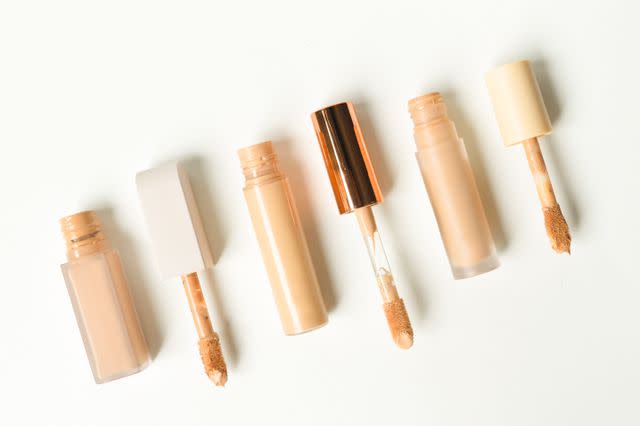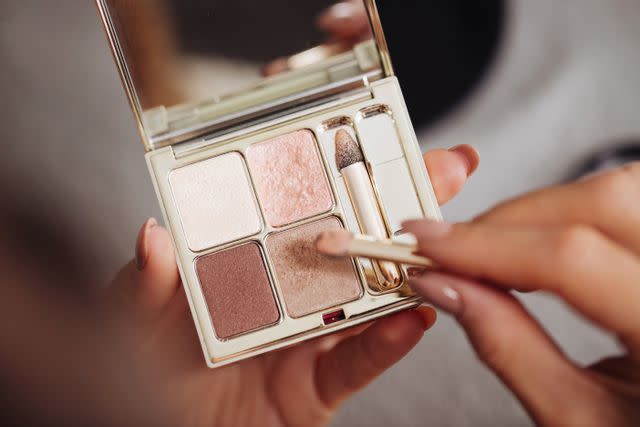Does Makeup Expire? A Beauty Expert Weighs In
:max_bytes(150000):strip_icc():format(jpeg)/GettyImages-1420669423-5247a9e1dd5b497cbbead1ddb7055931.jpg)
In my bathroom, there are two cabinet drawers full of old makeup: glitter eye shadow from high school prom, garish shades of lip glosses that I keep telling myself I'll throw out, and bronzers that are mostly powdery dust. My motto has always been waste not, want not (who knows when I'll need those fake eyelashes again?), but makeup can expire and collect bacteria over time.
With that in mind, how can you tell that your makeup is expired, and how dangerous is using it? Here’s what you need to know.
Related: 9 Old-School Southern Beauty Tricks That Still Work
Meet Our Expert
Krupa Koestline is the Chief Chemist for KKT Innovation Labs, a Clean Beauty Lab in Ocoee Florida.
Will Makeup Expire?
Makeup does expire, and sooner than you may have anticipated. Here’s a list of the shelf-life of common makeup products:
Foundation: one year
Cream blush: one year
Cream bronzer/contour: one year
Powder blush: 2 years
Powder bronzer: 2 years
Eyebrow gel: 18 months
Eyeshadow: 1 year
Eyeliner pencil: 2 years
Liquid eyeliner: 3-6 months
Mascara: 3-6 months
Lip balm: 1-3 years
Lip gloss: 12-18 months
Lipstick: 12-18 months
Nail Polish: 2 years

How To Tell If Your Makeup Is Expired
First things first, check for an expiration date! Unlike the jug of milk or carton of eggs in your fridge, cosmetics aren’t required to have one. Koestline explained, “For cosmetics, there are no FDA requirements on labeling expiration dates. Some brands make sure to add expiration dates for consumer safety and liability issues but most brands don’t because they don’t have to.”
To make matters a bit more frustrating, the date on your mascara may be PAO date instead of an expiration date.
Know The Difference
Expiration dates are printed in date format and refer to the shelf-life of the product when it’s unopened. PAO dates refer to the shelf-life of the product once opened.
Regardless of whether there is or isn’t an expiration date on your products, you can use your senses (and a little common sense) to gauge whether they’re expired. Some common indicators that it’s time to throw out your products are changes in texture, color, off odors, and any separation of the product, according to Koestline. Don’t ignore if eye products are suddenly causing irritation or watering either.
Should You Toss Expired Products?
While you may have been using old products without any noticeable issues, using expired cosmetics is not a good idea, according to Koestline. She explained, “Depending on the product, expired skin care can not only cause sensitization or allergic reactions but can also cause major infections if there is microbial growth in it.”
Expired products also work less effectively, potentially pilling and losing pigment. Or if your expired makeup contains active ingredients, like some foundations contain sunscreen, you’re at risk for sunburn and rash.
Some studies have found salmonella, E-coli, and other pathogens on old sponges, expired tubes of lipstick, and mascara, potentially leading to skin and eye infections. Since our skin naturally has bacteria on it, products like lipsticks and mascara that come in contact with it should be tossed after three to six months according to Koestline.

Related: The 10 Most Iconic Nail Colors Of All Time
How To Preserve Your Makeup
Store properly. Store makeup in a cool, dark place so your products last as long as possible. That means your bathroom may not be the best place as the heat from the shower can affect the preservatives or impact the texture.
Pay attention to packaging: Koestline also shared that product packaging can affect shelf-life. She explained, “Anything that is exposed to light, air, and moisture can affect the product's shelf- life. Product packaging can absolutely affect the expiration date of a product. Airless containers usually make a product last much longer than a product in a jar; for example.”
For more Southern Living news, make sure to sign up for our newsletter!
Read the original article on Southern Living.

